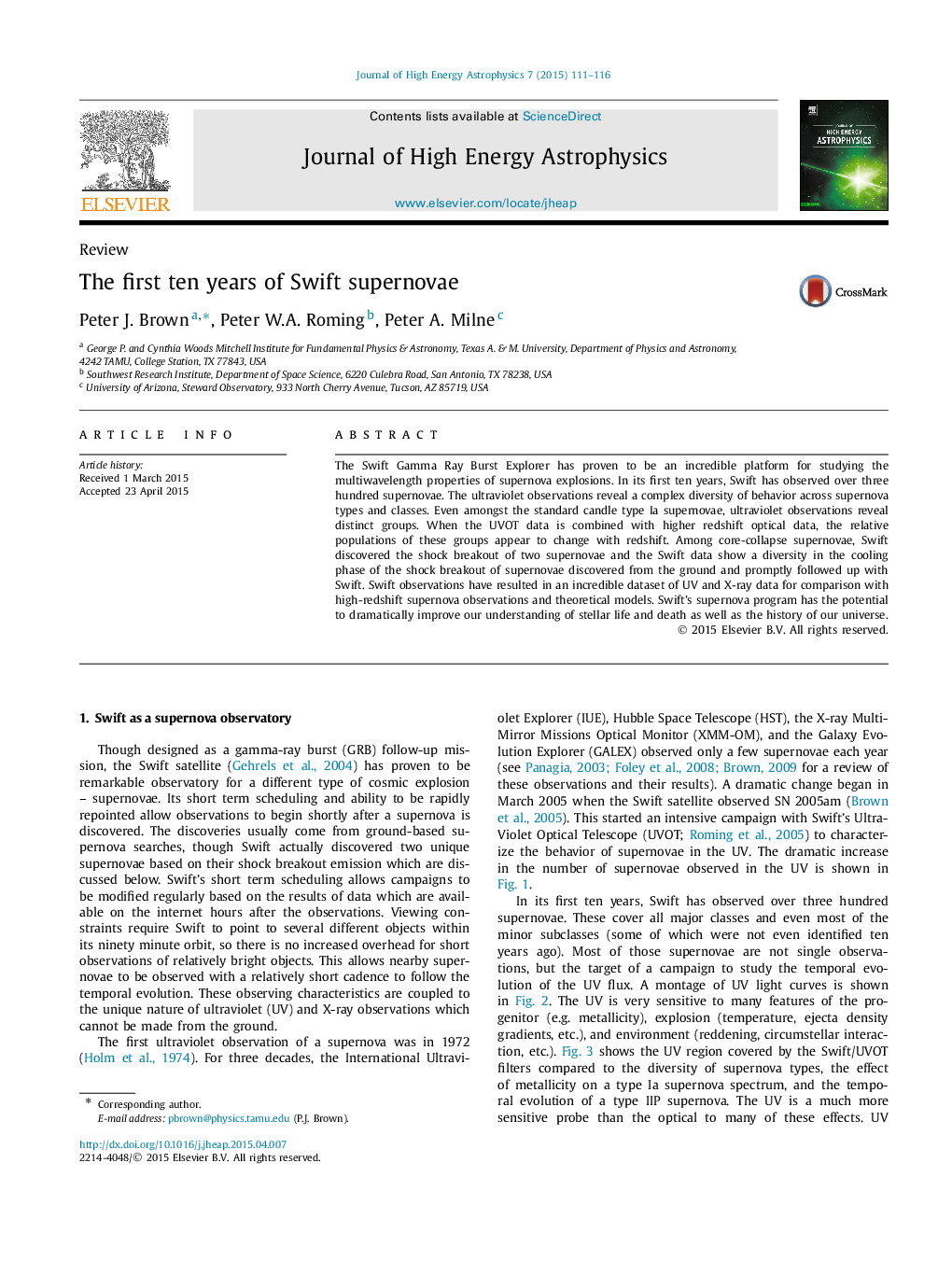| Article ID | Journal | Published Year | Pages | File Type |
|---|---|---|---|---|
| 1778640 | Journal of High Energy Astrophysics | 2015 | 6 Pages |
The Swift Gamma Ray Burst Explorer has proven to be an incredible platform for studying the multiwavelength properties of supernova explosions. In its first ten years, Swift has observed over three hundred supernovae. The ultraviolet observations reveal a complex diversity of behavior across supernova types and classes. Even amongst the standard candle type Ia supernovae, ultraviolet observations reveal distinct groups. When the UVOT data is combined with higher redshift optical data, the relative populations of these groups appear to change with redshift. Among core-collapse supernovae, Swift discovered the shock breakout of two supernovae and the Swift data show a diversity in the cooling phase of the shock breakout of supernovae discovered from the ground and promptly followed up with Swift. Swift observations have resulted in an incredible dataset of UV and X-ray data for comparison with high-redshift supernova observations and theoretical models. Swift's supernova program has the potential to dramatically improve our understanding of stellar life and death as well as the history of our universe.
Graphical abstractThe graphical abstract combines a mosaic of supernovae and their host galaxies by NASA/Texas A&M/Peter Brown and a rendering of the Swift spacecraft by NASA/Sonoma State University/Aurore Simonnet.Figure optionsDownload full-size imageDownload as PowerPoint slide
